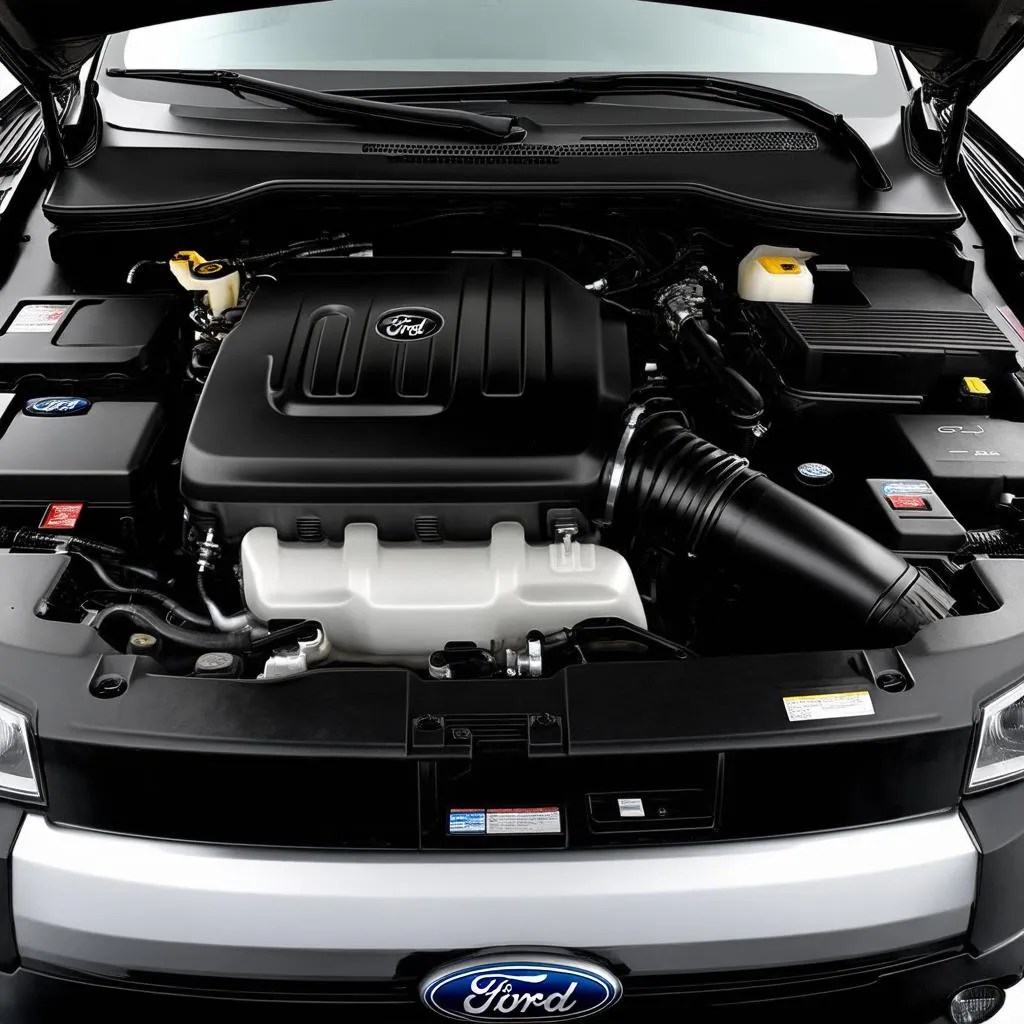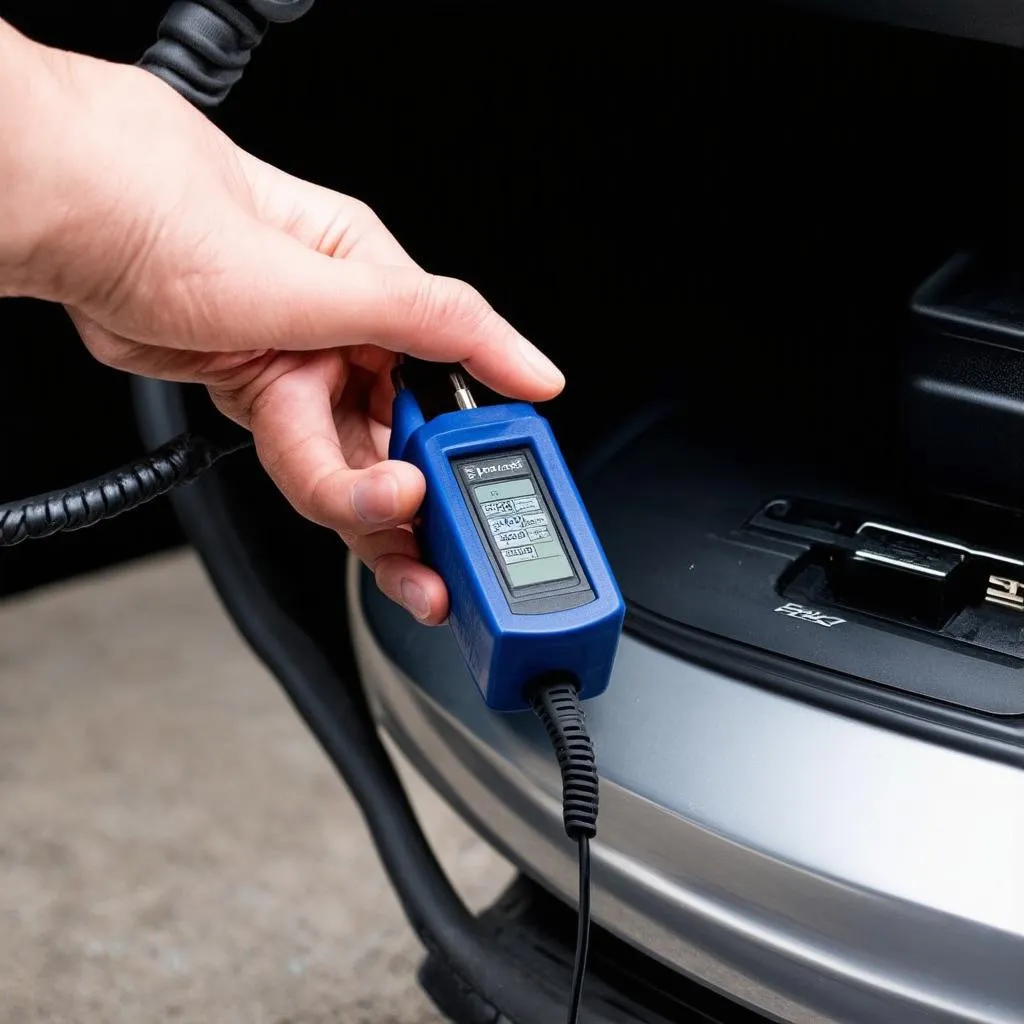Picture this: You’re cruising down the highway in your trusty 2009 Ford Flex, wind in your hair (or at least, flowing through the air vents), when suddenly, the “Check Engine” light throws a wrench in your plans. You pull over, heart sinking, and reach for your trusty OBD-II scanner. Two codes stare back at you: P0201 and P0301. What do they mean? And more importantly, what do you do now?
Don’t worry, fellow Flex enthusiast, we’ve got you covered. This article will delve into the depths of these cryptic codes, explaining what they mean, how they impact your vehicle, and how to get you back on the road with minimal stress.
Understanding the Codes: P0201 and P0301
Let’s break down the technical jargon into plain English:
-
P0201: This code signals a problem with the fuel injector circuit for cylinder #1. Think of it like a clogged artery in your car’s engine. The fuel injector isn’t delivering the right amount of fuel to the cylinder, which can lead to a host of performance issues.
-
P0301: This code indicates a misfire detected in cylinder #1. In simpler terms, the air-fuel mixture in that cylinder isn’t igniting properly, causing the engine to stumble or run rough.
Finding both codes simultaneously is a strong indicator that the two issues are related.
Why These Codes Matter
Ignoring these codes is like ignoring a flashing “Caution” sign. You might be okay for a while, but the problem will likely worsen, leading to:
- Reduced Engine Performance: Expect sluggish acceleration, decreased fuel efficiency, and possibly even stalling.
- Increased Emissions: A misfiring engine releases harmful pollutants into the atmosphere.
- Costly Repairs: Ignoring the problem can lead to more severe damage to your catalytic converter or other engine components.
Getting to the Root of the Problem
Now that we know what we’re dealing with, let’s play detective. Here are the most common culprits behind the dreaded P0201 and P0301 codes in a 2009 Ford Flex:
- Faulty Fuel Injector: The injector itself may be clogged, leaking, or electrically faulty, preventing proper fuel delivery.
- Wiring Issues: Damaged or corroded wiring in the injector circuit can disrupt the electrical signals, causing malfunctions.
- Vacuum Leaks: A leak in the intake manifold or vacuum hoses can disrupt the air-fuel mixture, leading to misfires.
- Spark Plug Problems: A worn-out or fouled spark plug in cylinder #1 can also cause a misfire.
The Fix: Restoring Your Flex to its Former Glory
Before you start ordering parts, it’s essential to diagnose the problem accurately. A qualified mechanic (or a skilled DIYer) can perform the following:
- Visual Inspection: Check for loose connections, damaged wiring, or vacuum leaks.
- Fuel Injector Testing: Use a multimeter to test the injector’s electrical resistance and ensure it’s within specifications.
- Compression Test: This test will determine if the cylinder has adequate compression, which is crucial for proper combustion.
- Spark Plug Inspection: Check the spark plug for signs of wear, fouling, or damage.
Once the culprit is identified, the repair process can begin. This may involve replacing the faulty fuel injector, repairing wiring, addressing vacuum leaks, or simply replacing a worn-out spark plug.
Beyond the Technical: A Touch of Perspective
While car troubles can be frustrating, they also offer a chance for reflection. In many cultures, a car is seen as more than just a machine; it’s a symbol of freedom, independence, and progress. Just as a smooth-running engine requires all its parts to work in harmony, our own lives require balance and attention to detail. Perhaps these engine codes are a gentle reminder to check in with ourselves, to ensure all aspects of our lives are running smoothly.
Seeking Expert Guidance
Need a helping hand navigating the world of OBD codes and car repairs? Our team of automotive experts is just a message away. Contact us on WhatsApp at +84767531508 for personalized support and guidance. We’re here to help you get back on the road with confidence.
 Ford Flex engine bay
Ford Flex engine bay
FAQs about Ford Flex P0201 and P0301 Codes
Q: Can I still drive my Ford Flex with these codes?
While you technically can drive a short distance, it’s not recommended. Driving with a misfiring engine can cause further damage and lead to more expensive repairs down the line.
Q: How much will the repairs cost?
The cost of repairs depends on the underlying cause. A simple spark plug replacement will be significantly cheaper than replacing a faulty fuel injector. It’s best to get a quote from a trusted mechanic for an accurate estimate.
Q: Can I fix these codes myself?
If you’re mechanically inclined and have some experience working on cars, you might be able to tackle some of the repairs yourself. However, if you’re unsure about anything, it’s always best to err on the side of caution and consult a professional.
Related Questions and Resources:
- What are the most common Ford Flex problems?
- How to choose a reliable OBD-II scanner
- DIY car maintenance tips for beginners
 OBD Scanner plugged into Ford Flex
OBD Scanner plugged into Ford Flex
Explore More on Techcarusa.com
- Troubleshooting Common Car Problems
- Understanding Your Car’s Electrical System
- Finding the Best Mechanic in Your Area
We hope this article has shed some light on the mysterious world of OBD codes and empowered you to tackle those P0201 and P0301 codes head-on. Remember, knowledge is power, and with the right information, you can keep your 2009 Ford Flex running smoothly for years to come.
Let us know in the comments below if you have any other questions or if you’ve experienced similar issues with your Ford Flex. We’d love to hear from you!